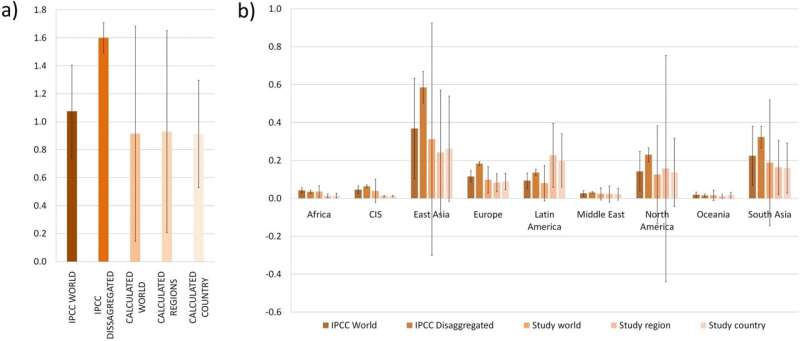
Synthetic nitrogen fertilizers account for 2.1% of global greenhouse gas emissions, new research shows.
Unlike organic fertilizers, which come from plant or animal material, synthetic fertilizers are made by humans using chemical processes. Production and transportation cause carbon emissions, while agricultural use of these fertilizers leads to the release of nitrous oxide (N2O)—a greenhouse gas 265 times more potent than carbon dioxide (CO2) over a century.
The research team—from the Greenpeace Research Laboratories at the University of Exeter, and the University of Turin—found that the synthetic nitrogen fertilizer supply chain was responsible for emitting the equivalent of 1.13 gigatonnes (billion tonnes) of CO2 in 2018.
This is more than 10% of global emissions from agriculture, and more than the emissions from commercial aviation in that year. The top four emitters—China, India, U.S. and the EU28 (European Union countries plus the UK)—accounted for 62% of the total.
When nitrogen fertilizer is applied to soil, some is taken up by plants and some is used by soil micro-organisms, which produce N₂O as a by-product of their metabolism. Nitrogen can also end up leaching from the site.
“Three quarters of nitrogen in crop production (expressed in terms of protein and including bioenergy by-products) is currently devoted to livestock feed production globally.”
The study’s data, from 2018, showed North America had the highest annual per person nitrogen fertilizer use (40 kg) followed by Europe (25-30 kg). Africa had the lowest use (2-3 kg).